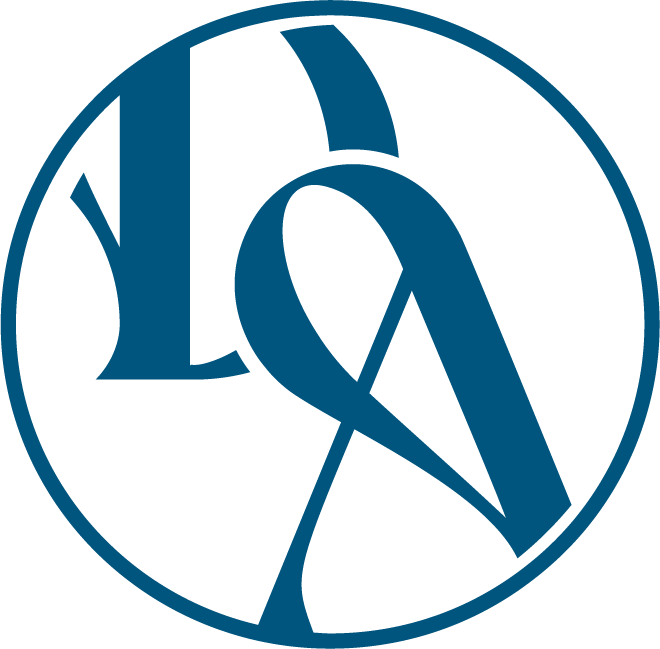If we have learnt anything throughout our weekend tour, it is that Singapore harbours many cultures and is a place that celebrates diversity. It is therefore important that the diversity of needs and experiences can be accommodated to as best as possible. This was an insight that informed our decision to design a solution that is accessible to all – not just specific to people with disabilities. Food is a significant part of Singaporean culture, largely due to the multicultural aspect of it. One of the main things that fascinated me upon arrival was the abundance of food areas in Singapore, such as Hawker centres and how affordable the food is in such places.
We observed that due to their affordability Hawker centres attracted many people and were the perfect places for Singaporeans to enjoy their meals as well as to socialise. While Hawker centres are affordable, they are not accessible due to being crowded by tables, chairs, and people. Furthermore, menus can be hard to read from a distance and communication issues may arise due to language barriers or difficulty to hear or speak.


The ideation process involved everyone in our group as we all shared whatever ideas came to mind and tried bouncing off one another to find the perfect solution. Alongside this, the nursing students were compiling background research into how and why Hawker centres in Singapore are inaccessible to those with physical disabilities, especially wheelchair users.
The height adjustable and tilt-able self-serve kiosk was inspired by innovations such as the height adjustable shelves at the Smart Room. Our solution aims to improve already existing kiosks such as McDonalds kiosks which are not wheelchair friendly due to their large screens where some elements cannot be reached., Additionally, we wanted to design a digital interface that accommodated to users with Autism or motor skill disorders.
With our solution being a self-serve kiosk, our team had to design both the structure of the kiosk and the digital interface. Our industrial design and interactive design students therefore had the big responsibility of producing the main parts of the solution. I was able to provide the Interaction Design student some resources on the features that make a user-friendly digital interface. I also provided some rough sketches of how such features can be applied to our design- for example, reducing clutter, using big text and clickable boxes and as well as maintaining whitespace.
The other Visual Communications student and I worked together to create the brand identity for Omni Kiosk, which is what we decided to name the brand. She was able to finalise the logo, colour palette and icons before we had to meet again. I worked on the marketing posters that we would use to spread awareness of the kiosks and the priority seating systems to be implemented. Meanwhile, she produced the marketing social media posts. The Animation student created a floorplan based on the NYP south canteen to identify where the kiosks would be and where priority seating could be situated. I created the storyboards through simple pencil and pen sketches. The nursing students began compiling the research and any material into a temporary slideshow to give us a head start for when we had to create the presentation. They also took responsibility of directing the video pitch and performed in most of it.
Once the Industrial Design student finalised the kiosk design, he rendered it so we can produce mock ups. The Animation student also produced extra renders using another software from various angles.
The Visual Communications students (including myself) created mock-ups of the device, interface, marketing tools and the priority stickers. I wrote the summary for the banner and was responsible for putting the banner together after finalising all the elements to be included. I condensed the slides and finalised them so they were ready for the pitch on the following Monday.
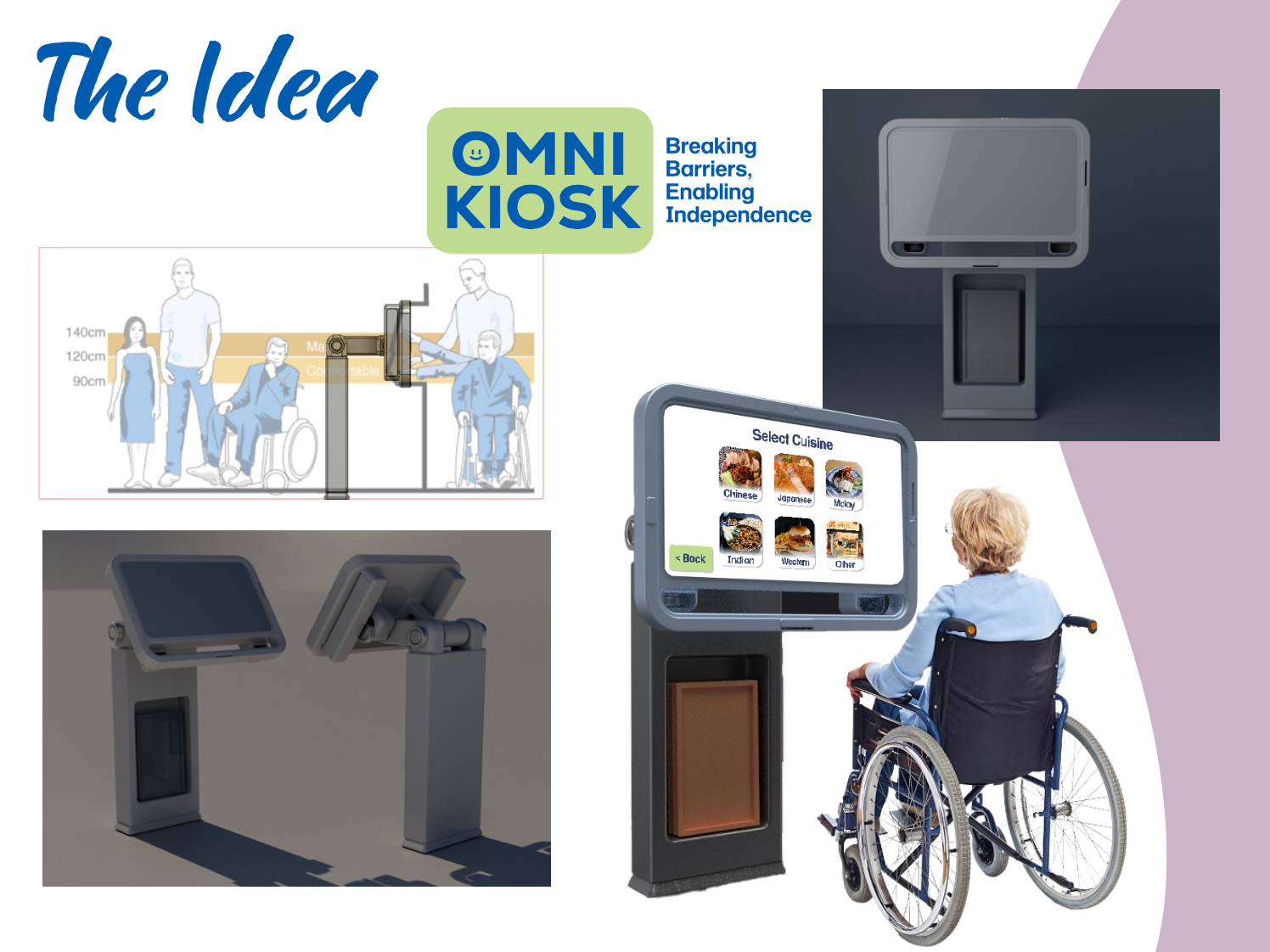
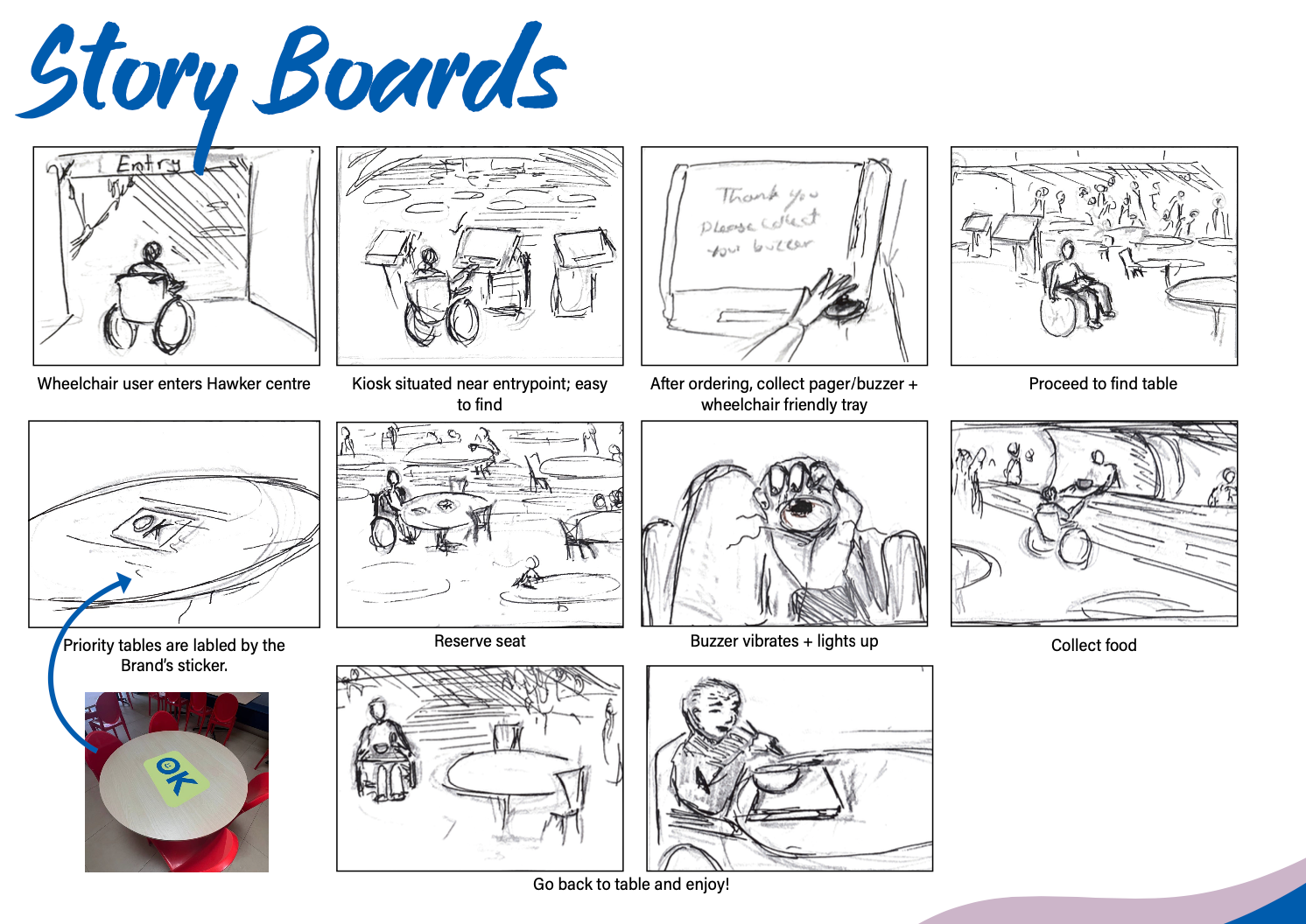
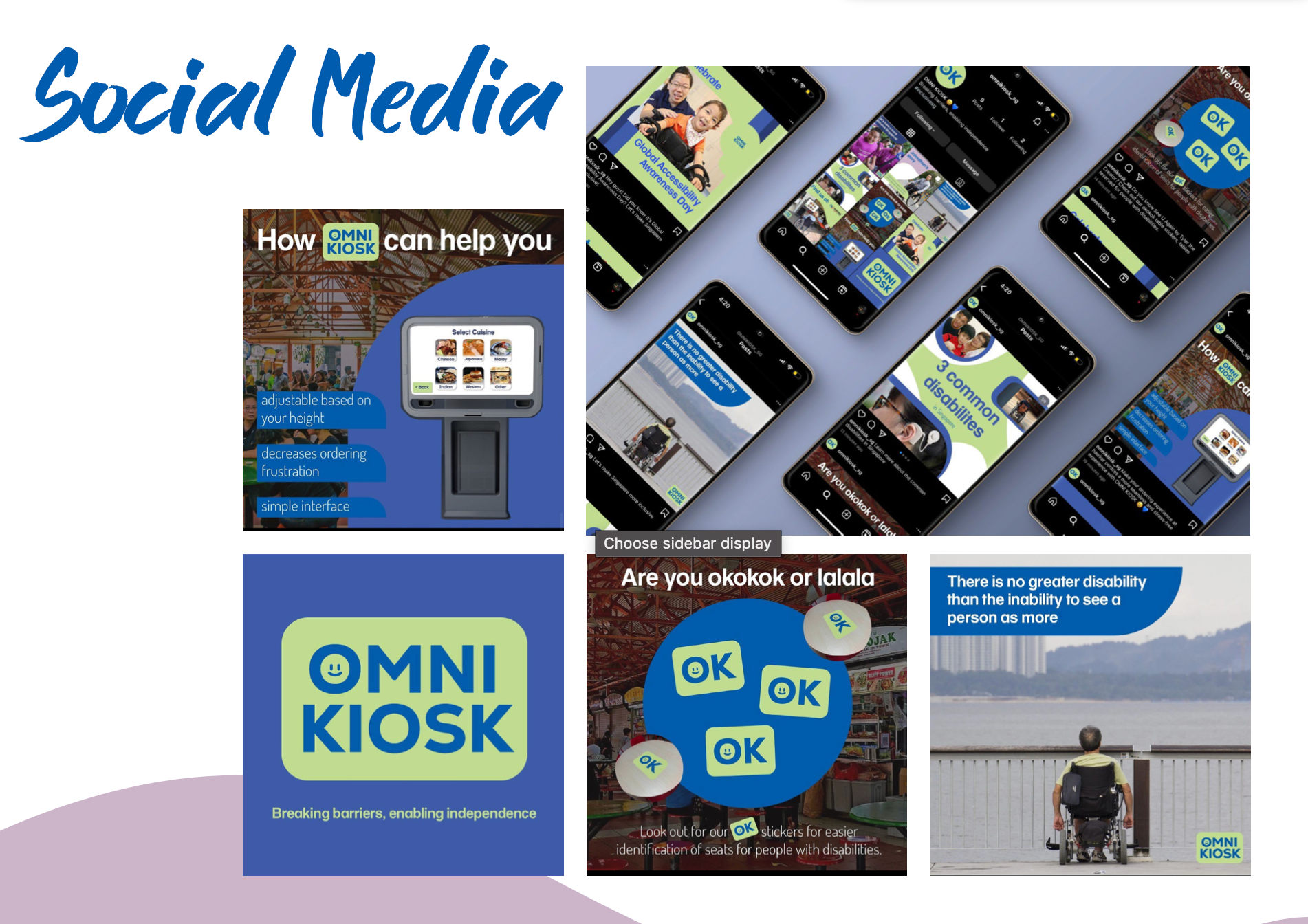
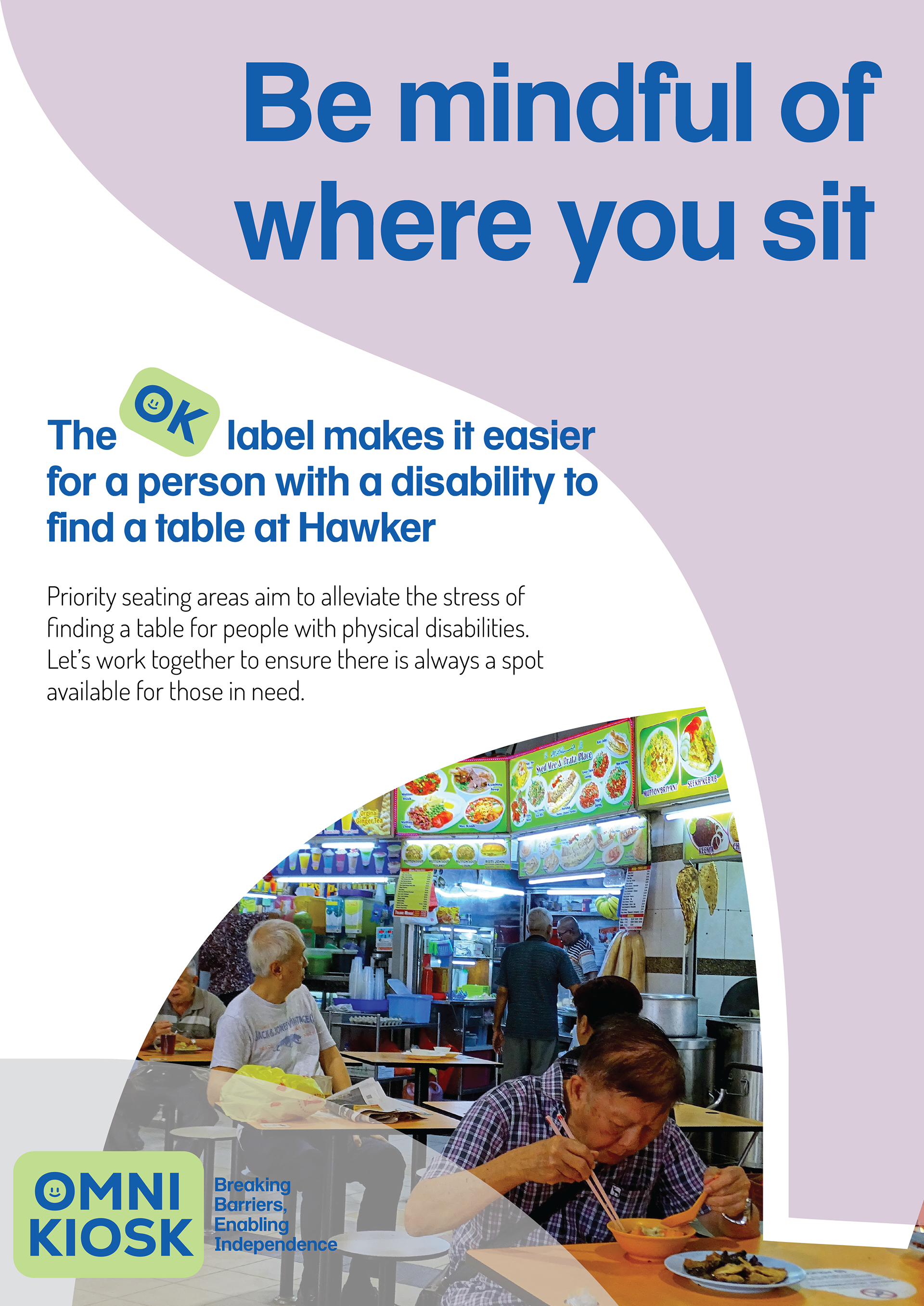

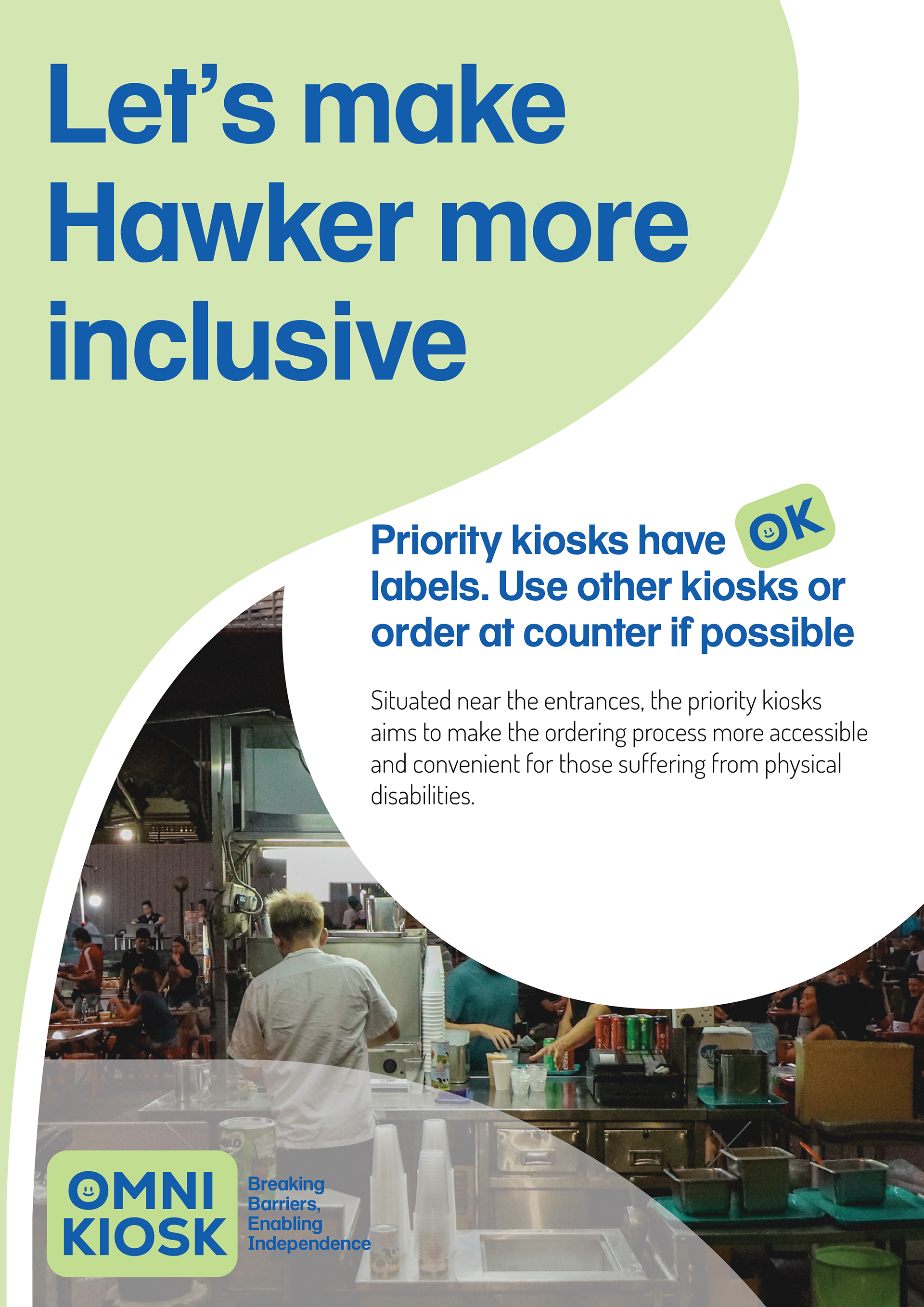
The exhibition was a great experience. Seeing the diversity of solutions on the banners was so fascinating. Our group got to discuss our work with some of the industry professionals at the event which was incredible.
Overall, I really enjoyed working on this project. It was amazing getting to work with students from different cultural backgrounds and fields as it allowed us to contribute different perspectives and viewpoints to ultimately reach a great solution. Our solution has the potential to be implemented beyond the space of Hawker centres and even beyond the food and beverages industries.
